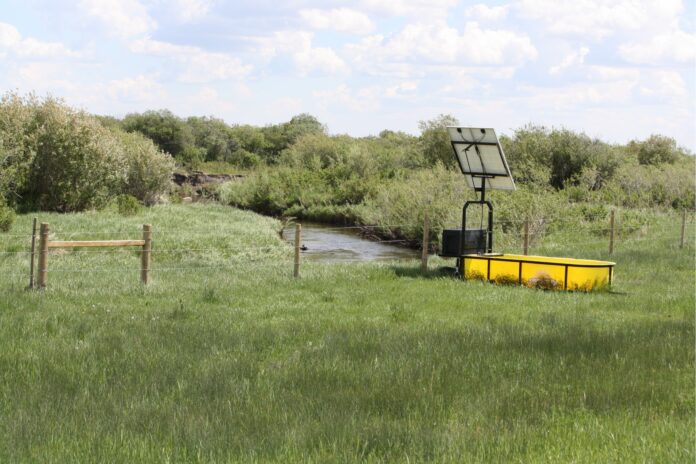by Hillary Luchinski
Saskatchewan Ministry of Environment
Riparian areas are the ‘Green Zone’ of our landscape – the transition zone between our waterbodies or courses and their surrounding uplands. These areas have unique vegetation and soils, which means they provide unique ecosystem goods and services, which are the environmental benefits that people receive from the functions of a properly managed and healthy ecosystem. These include, but are not limited to, climate regulation, water treatment and supply, pollination, nutrient cycling, air quality, carbon sequestration and disturbance regulation. Healthy riparian areas play an especially important role when it comes to plant and animal biodiversity, maintaining and improving water quality and quantity and resilience to changing weather patterns.
For example, almost all of our Saskatchewan wildlife relies on riparian areas at some point in their life cycle. Whether those areas offer shelter, food or a place to raise their young, healthy riparian areas support biodiversity and are especially important for our native pollinators and species at risk. Pollination and biodiversity are ecosystem services.
Similarly, riparian areas play a key role on the landscape when it comes to maintaining the quality and quantity of our freshwater resources. A riparian area with healthy desired vegetation filters pollutants and sediment from overland runoff, holds our shorelines from eroding away and captures nutrients and sediments flowing downstream. That vegetation also plays a huge role in the process of groundwater cycles, recharging our underground aquifers.
Perhaps the biggest benefit of healthy riparian areas is adding resiliency to our landscape in the face of extreme weather events, such as droughts or flooding. Riparian areas and their associated water features provide natural flood control. During wet times, riparian areas slow down the water, allowing it to filter down and store in our aquifers. This reduces downstream damage from flooding and provides an underground water source for the surrounding plants and animals during drier times, or later in the season.
What can you do to help maintain riparian areas?
- Manage livestock access with exclusion fencing, remote watering systems, graded access ramps or deferred grazing to when riparian areas are less sensitive;
- Leave a minimum 30 metre vegetated buffer between cropland and water features; and
- Manage invasive species in riparian areas to maintain desired native vegetation.
For more information on riparian area management or programs to manage livestock access to riparian areas, call the Agriculture Knowledge Centre at 1 (866) 457-2377.


